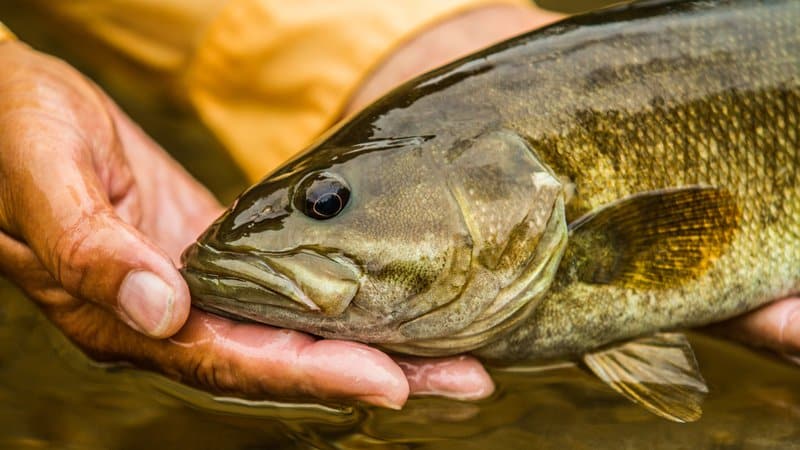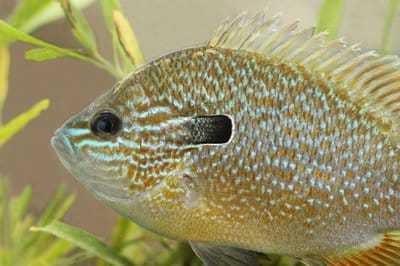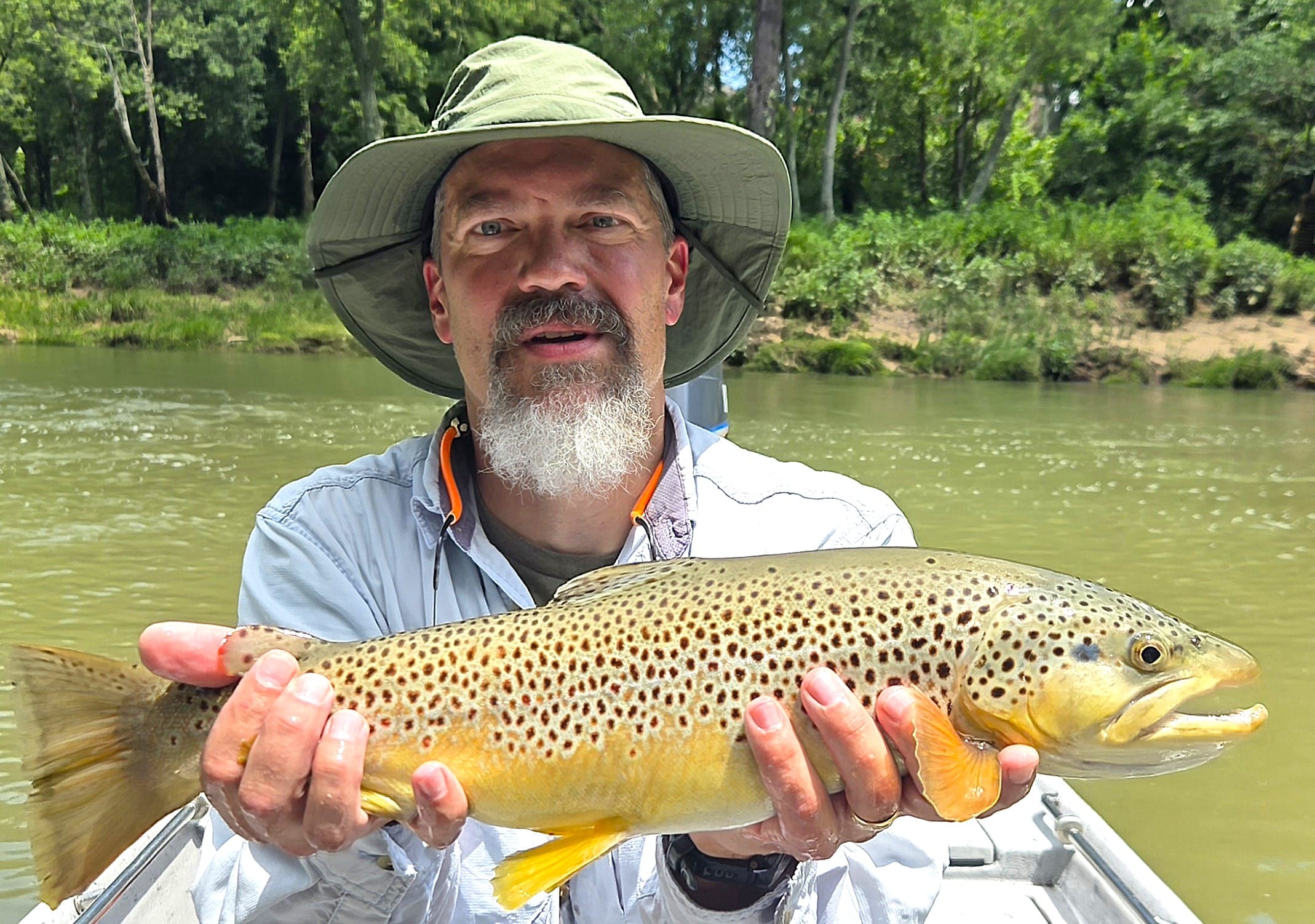Life list adds angling excitement
BY Chuck Long
ON 03-24-2021

March 24, 2021
Chuck Long
AGFC Northeast Regional Educator, Jonesboro
Lists are commonplace in our society; shopping lists, to-do lists and wish lists are found in most every household. Most lists are met with anxiety, but there is a list that each Arkansas angler should try to keep: an Arkansas fish list.
A fish list keeps up with species as an angler first catches them. It encourages the angler to broaden horizons and seek fish in a variety of waters, improving their knowledge. Lists also spark the use of different techniques from live bait to artificial lures.
With more than 200 species of fish in Arkansas, so another key ingredient to a fish list is the ability to identify species. Though many can be quickly identified by an internet search, a good book can be invaluable in the identification process. The AGFC offers the Arkansas Fish Pocket Guide as a download or printed publication for free. For those willing to spend a few dollars, “Fishes of Arkansas” from the University of Arkansas press is the gold standard in fish identification.

Some of the first fish to fill an angler’s list often are bream species. Bluegill, redear sunfish and green sunfish can be caught in a variety of waters. Though most sunfish are common, this group of fishes produces some obscure species like the flier, a small sunfish often confused with a bluegill. This group can also produce some fish that are only found in certain types of waters. The shadow bass and Ozark bass, for example, will be found primarily in clear mountain streams.
Largemouth bass are easy to add to the fish list, but smallmouth and spotted bass will need to be sought in certain waters. Some bodies of water, like Greers Ferry in central Arkansas and Beaver Lake Bull Shoals Lake and the Kings River in northwest Arkansas all have the potential to produce all three in single outing.
Both black and white crappie can be found throughout the state. A quick count of the dorsal spines will distinguish the species with the white crappie having six spines while the black crappie will have seven or eight.
Fishing for catfish can add several species to the list for anglers who adventure to various types of waters. The more common catfishes, the channel, flathead, and blue can be caught in most lakes and rivers. The channel will be the most accessible and is the fish most often stocked for fishing derbies by the Arkansas Game and Fish Commission. The blue and flathead are more often found in flowing waters, though some lakes boast good populations of each. Three species of bullheads also live in Arkansas: the black, brown and yellow. Identification will be a key to determine exactly which species is at the end of the line.
Introduced to Arkansas after the construction of dams on major rivers, trout can be found in several rivers flowing with cold water. The rainbow trout is the most often stocked species, and can even be found in Family and Community Fishing Lakes in winter. Brown, cutthroat and brook trout also can be found in the tailwaters of dams forming some Arkansas lakes, but are not as prevalent as rainbows. Bull Shoals and Norfork tailwaters offer the opportunity to catch all four species on one fishing trip. Additional stockings of tiger trout (a brown/brook trout hybrid) and golden rainbows (a rare color variation of the common rainbow trout) add even more flavor to Arkansas’s trout waters.

White bass can be found in many rivers as they make their spawning run in early spring. Striped bass are a little harder to target but can be found in some of Arkansas’s larger lakes, such as Lake Ouachita, Beaver Lake and Lake Dardanelle. The hybrid striped bass, a cross between the white and striped bass, have been stocked in a couple of lakes as well.
Walleye and sauger are found in many bodies of water across the state, but often require specific tactics. These fish are often found near the bottom of flowing rivers and can be tempted by a jig tipped with a minnow.
There are a host of other fishes that can be added to the fish list. While not as popular as sport fish, many “rough fish” have much more potential than anglers give them credit. Grinnel (bowfin) are found in backwaters across the state, put up an amazing fight and are eager to take most bass lures, especially spinnerbaits. Freshwater drum are easily caught in most rivers on worms or crawdads as they make their spawning run.
The gars of Arkansas offer an interesting challenge. Spotted gar are the smaller species and are found in more quiet waters. Likely to take a crappie jig or minnow, these fish are easy to find and catch. The same can be said for the longnose gar and it can be found in a wider range of areas than the spotted gar. The shortnose gar is typically found in the larger river systems of the state. Often confused with a spotted gar, the shortnose lacks spots on top of the head. The alligator gar has the title of the largest fish in Arkansas and is found mainly in large rivers. Big baits and big tackle are keys to taking alligator gar.
There are several types of suckers that inhabit the waters of Arkansas. These fish, as well as many other species, are best sought with a worm fished on the bottom. The redhorse species are most often caught, but the buffalo species will also occasionally be taken. Once again, fish identification is critical in adding species to the list.
Chain and grass pickerel can be taken from a few bodies of water in Arkansas and look very similar. The chain pickerel is larger and more abundant. The shovelnose sturgeon and paddlefish are found in many Arkansas rivers and can be incidental catches while targeting other species.
For specific ideas on the wheres and hows of fishing in Arkansas, please check agfc.com. Rules and regulations vary depending on waterbody, so check those. Also check out the Virtual Nature Center and Arkansas Game and Fish Commission YouTube channel for videos on fishing in Arkansas.
Recent News

Arkansas Wildlife Weekly Fishing Report
Jul. 3, 2025
Subscribe to Our Weekly Newsletter E-mails
Don’t miss another issue. Sign up now to receive the AGFC Wildlife Weekly Newsletter in your mailbox every Wednesday afternoon (Waterfowl Reports are published weekly during waterfowl season and periodically outside the season). Fishing Reports arrive on Thursdays. Fill in the following fields and hit submit. Thanks, and welcome!

